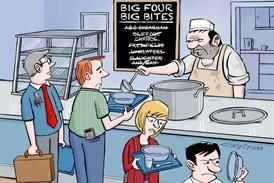No gain, no loss
Transfer between husband and wife/civil partners on the occasion of separation and divorce
Under the Taxation of Capital Gains Act 1992, transfers between a husband and wife, or between civil partners, produce neither a gain nor a loss for capital gains tax (CGT) purposes during the marriage/partnership, provided that they are co-habiting.
This enables spouses/civil partners freely to transfer assets between themselves without crystallising any tax liability. Where the parties separate, and this is a separation that is likely to be permanent, the no-gain, no-loss basis continues but only up to the next 5 April after the date of separation. Thereafter, a charge to CGT may arise if the asset transferred is deemed to have gained in value.
For some years, the Law Society has recommended to the government that section 58 of the 1992 Act be amended to allow no-gain, no-loss treatment for transfers between spouses and civil partners made after the year of assessment in which separation occurs.
The Law Society's view is that the current rules do not reflect the reality of the time taken to complete a divorce settlement, and that the proposed change would have the effect of making divorce easier. In some cases, it may even avoid divorces by removing the existing incentive to split the matrimonial assets within a short time after separation. It is considered possible that to allow a longer period of time would give parties time to reflect on, and possibly reconcile, their differences.
The Law Society's opinion has been reinforced by two recent trends. First, buy-to-let investment in property has become increasingly popular and it is, therefore, inevitable that the courts will have to resolve ownership issues and order transfers of this type of property. Clearly, without a relief of the type suggested, substantial CGT liabilities will be incurred.
The other development has been the House of Lords decision in White v White [2000] 3 WLR 1571, which makes it clear that the courts will be minded to order more substantial transfers of property in future so as to ensure a greater equality between the former spouses in financial terms.
Family lawyers' group Resolution has also adopted a policy position supporting such a change. It is working with the Law Society to lobby the government to give effect to the recommendation.
Discussions with the HM Revenue & Customs (HMRC) led to the Law Society's recommendation being put to ministers by HMRC in 1998, but serious consideration would not be given as there was no hard evidence that many people were affected. The Law Society subsequently submitted a collection of tangible examples of the impact of this rule. However, HMRC was unable to convince ministers that this warranted action. Those examples included pre- and post-White cases.
The Law Society has continued to press the recommendation for change and the issue is back on HMRC's agenda for consideration. However, while HMRC is prepared to revisit this issue, it has again asked for the Law Society's evidence to justify making a recommendation for change to ministers. HMRC is particularly keen to have some understanding as to the number of cases affected by this rule. It is under the impression that this only really bites at the upper end of the wealth spectrum and that this is not an issue in more run-of-the-mill cases, therefore illustrations demonstrating this is not the case are required.
The Law Society is asking practitioners to provide it with information to illustrate the impact of these CGT rules. It would like practitioners to:
Respondents should e-mail: CGTinfo@lawsociety.org.uk.
By Gill Rivers, consultant, Charles Russell, London



























No comments yet